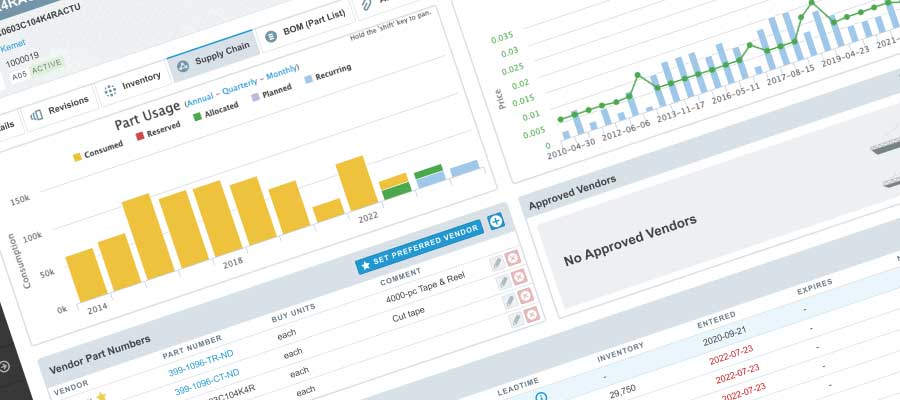There can be a lot of confusion between Product Data Management (PDM) software and Product Lifecycle Management (PLM) software when it comes to managing product development data. First impressions of both software tend to indicate software that essentially performs the same software. While there can be a lot of overlap in functionality, these software packages are designed to perform different tasks, but those tasks work best when they work together in an organization.
To put this conversation in some context, it’s important to understand where each system’s strengths lie. Generally, PDM software is focused on managing and organizing data related to a product’s design and development. These files tend to be CAD-related, as PDM systems are usually highly integrated with design and engineering software. On the other hand, PLM software is focused on managing the entire lifecycle of a product, from concept to disposal. By extension PLM software is designed to make collaboration possible beyond the engineering department. It’s designed to share product and part information throughout the entire company. This makes it easier to manage the handoff from engineering to production operations.
Cooperation is Key
In many firms product data management software and product lifecycle management software are often used together to manage product-related data and information throughout the entire product lifecycle, from concept to disposal. Using both systems together allows an organization to benefit from the strengths of both without having to work around the missing functionality of either.
Below are some ways that PDM and PLM software can work together:
1. Integrating Data
PDM software is typically used to manage design data, such as CAD models and technical specifications. This data can be integrated with PLM software to provide a more comprehensive view of the product data across the entire product lifecycle for the rest of the company.

2. Managing Changes
PDM software is often used to manage changes to product designs, including Engineering Change Requests (ECRs) and Engineering Change Orders (ECOs). These changes can be managed within PLM software to ensure that they are effectively implemented across other departments including production, quality and purchasing.
3. Managing Configurations
PDM software can be used to manage product configurations, such as different options and variations during the design phase. Once a production intent version of the product is created, PLM software can then be used to manage these configurations across the entire product lifecycle, including managing different versions of the product and ensuring that the right product configuration is used for specific markets, customers, or applications.
4. Collaboration
PDM software is often used by engineering teams to collaborate on product designs. This is typically done through access to the company’s CAD systems. PLM software is designed to share information on a wider scale – and more cost-effectively. It can be used to facilitate collaboration across the entire organization, including departments such as sales, marketing, and customer service. This can be done without experiencing the difficult learning curves found in CAD software.

5. Managing Suppliers
PLM software can be used to manage suppliers and supply chain relationships, including managing supplier performance and ensuring that suppliers are providing the right components and materials for the product. PDM software can be used to manage technical data related to these components and materials when it comes to changes in product design files.
Connecting the Dots with the Right Lines
PDM and PLM software can work together to provide a more comprehensive view of product data and information across the entire product lifecycle. By integrating these systems, organizations can streamline their product development processes, reduce errors and rework, and bring better products to market faster and more efficiently.
If you’ve come to the end of what your PDM system can provide in terms of data sharing and product information management, it’s time to add PLM capabilities to your tool chain. Sign up today for Aligni PLM!
Start your 30-day free trial
Helping You Make Great Things…Better.
